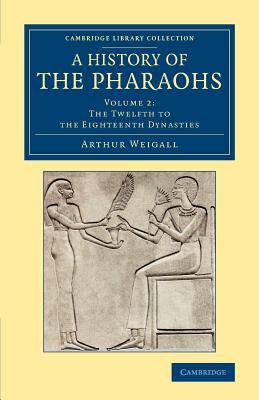
Door een staking bij bpost kan je online bestelling op dit moment iets langer onderweg zijn dan voorzien. Dringend iets nodig? Onze winkels ontvangen jou met open armen!
- Afhalen na 1 uur in een winkel met voorraad
- Gratis thuislevering in België vanaf € 30
- Ruim aanbod met 7 miljoen producten
Door een staking bij bpost kan je online bestelling op dit moment iets langer onderweg zijn dan voorzien. Dringend iets nodig? Onze winkels ontvangen jou met open armen!
- Afhalen na 1 uur in een winkel met voorraad
- Gratis thuislevering in België vanaf € 30
- Ruim aanbod met 7 miljoen producten
Zoeken
Omschrijving
The career of Arthur Weigall (1880-1934) encompassed Egyptology but also stage design, film criticism and journalism, as well as fiction and books about ancient Egypt. After studying in Germany, he worked at Abydos with Flinders Petrie, but in 1905 he was unexpectedly promoted to Chief Inspector of Antiquities for Upper Egypt, when Howard Carter was forced to resign. His work in Egypt, especially in the area of Luxor, focused on the conservation of monuments and the prevention of the shipping of artefacts abroad, until 1911, when he returned to London. In the preface to this two-volume work, published in 1925, Weigall likens the writing of a history of Egypt to the piecing together of a jigsaw puzzle consisting of thousands of pieces, but presents a chronological narrative at a level to satisfy both the scholar and the interested amateur. Volume 2 covers the period from the twelfth to the mid-eighteenth dynasty.
Specificaties
Betrokkenen
- Auteur(s):
- Uitgeverij:
Inhoud
- Aantal bladzijden:
- 474
- Taal:
- Engels
- Reeks:
Eigenschappen
- Productcode (EAN):
- 9781108082914
- Verschijningsdatum:
- 25/01/2016
- Uitvoering:
- Paperback
- Formaat:
- Trade paperback (VS)
- Afmetingen:
- 140 mm x 216 mm
- Gewicht:
- 598 g

Alleen bij Standaard Boekhandel
+ 173 punten op je klantenkaart van Standaard Boekhandel
Beoordelingen
We publiceren alleen reviews die voldoen aan de voorwaarden voor reviews. Bekijk onze voorwaarden voor reviews.











